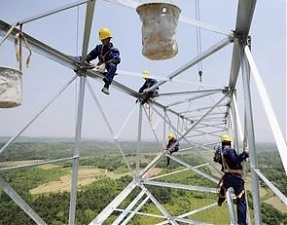Baltic States – CIS, Energy, EU – Baltic States, Forum, Lithuania
International Internet Magazine. Baltic States news & analytics
Saturday, 27.04.2024, 01:37
Nordic, Baltic power markets' integration will boost competitiveness of region
 Print version
Print version |
|---|
"The prices of electricity derivatives for Lithuania for 2016 are now 13% cheaper compared with the average electricity price in 2014. This December, when the new power interconnections NordBalt and LitPol Link are launched, Lithuania will become a hub where five markets meet – Nordic and Baltic, Poland, Belarus and Russia. The efficient infrastructure and transparent electricity market will boost competitiveness in the region," said Mr Virbickas inviting Central European companies to become active players in the Baltic Sea region power market.
With two electricity links between Estonia and Finland, and two new powerful interconnections, NordBalt and LitPol Link, starting to operate at the end of this year, the Baltic countries will double the region’s opportunities for electricity trade while the transfer capacity will surpass annual electricity consumption. The well-developed electricity infrastructure will connect the Baltic and Nordic countries into a highly-integrated electricity market of the Baltic-Nordic region where the bidding areas will help to identify the bottlenecks of the grid that need upgrade.
At the end of 2014, the total installed capacity of the Nordic and Baltic countries and Poland was 233 GW, while electricity consumption of the whole region in 2013 was 914 TWh. The Baltic countries are forecasted to maintain the biggest increase in electricity consumption in the region, with an annual growth of about 1.1% until 2020. The power generating capacities thus remain on the agenda of the Baltic Sea region energy sector for the coming years.
When it comes to the future of generation mix, the scenarios seem to be different for a while. As Finland is building new nuclear power plants, Sweden considers closing down its ageing nuclear facilities. Meanwhile, Poland relies on fossil fuels as its primary energy source and the key driver in Poland’s energy sector remains the carbon emission price of allowances.
Russia's north-western and central regions which influence the electricity flows to the Baltic countries are mostly dependent on fossil fuel and hydro power. Due to inadequate transmission infrastructure, a capacity market was introduced in Russia at the end of 2010. This resulted in 40% decrease of electricity exports from Russia to Nordic and Baltic countries. During peak hours the capacity fee may increase the price of exported electricity more than twice thus making the sale of electricity to the Baltic countries not commercially viable even for the sole trading licence holder. In 2014, the amount of electricity imported to the Baltic countries through power links with Belarus was 1.7 TWh or 7% of the annual consumption of the Baltic countries.








 «The Baltic Course» Is Sold and Stays in Business!
«The Baltic Course» Is Sold and Stays in Business!

